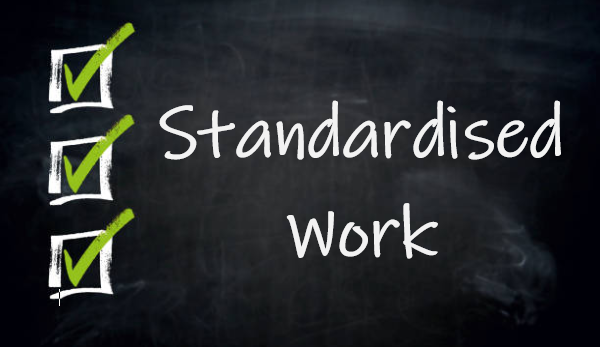Such a critical step, but do we use it? Do we need it? Can we do without it?
Of all the lean tools available in our constant drive to take away the wastes created in manufacturing, standardised work is the least utilised, it is sometimes felt automation removes this from the need.
Whilst automation gives driven manufacture, without standards how do you check the manufacture is achieving what is required? How do you determine if there has been shortcuts incorporated? Standardised work is a key to performance measurement. Just like 5S has a visual sense when change has occurred, standardised work will give a step by step guideline to what is required. The strength of standardised work is what it builds.
- Sustainability – Right approach day after day.
- Discipline – Building the culture within the organisation
- Reliability - Work instruction, follow the steps and guidelines
- Training aide – Ease of training for new employees
- Time management – documented instructions and total understanding
- Repeatability – Reduced repair
- Quality – Standards built to a specification
- Safety – Assessed risk management
With step by step guidelines to check, we can see if a change has occurred, when it goes wrong, this guideline will show the area where the fault occurred.
All businesses have a time factor associated to determine progress or stagnation. Standardisation runs in conjunction with a takt time, this heartbeat as it is known sets the pace of the required manufacture. This doesn’t necessarily mean a small repetitive process, anything we manufacture in every line of business should have an understanding of time as it is a required part of the overall cost associated.
Standardised work helps teams achieve their requirement by documenting a set of repeatable processes of how it has to work, aligned with the materials required and the time needed to perform the task. With these guidelines as the standard is improved, the new standard becomes the baseline for further improvements, and so on. Improving standardised work is a never-ending process hence the term “continuous improvement” for which Standardised work has a key purpose requirement.
With standards in place, Management can see where they are against customer requirements in a single focus point, supervision can cover their daily to do lists with a plan, check random points throughout the week to ensure the process is in line, the operator to make suggested improvements to the standardised work through their knowledge of the process, rotation points when high risk factors in place, the correct workwear thus keeping people safe.
With all the tools of Lean, Standardised work is not a function alone it is a reinforcement of culture, before this is implemented you need to start with Culture Awareness and Leadership, 5S and visual management then standardised work, they are all parts of a jigsaw required to build the big picture.
In SIRF’s “The Edge” Leadership program. The standardisation process as well as focusing on all the soft tools required in Leadership are part of the 6 Day programme being run for the first time in WA next year after many successful years in other regions throughout Australia.
Best Regards,
Chris Bush
WA State Manager SIRF Roundtables


